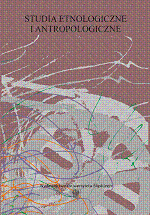Miejsca znaczące w przestrzeni miejskiej. Antropologiczna analiza na przykładzie Opola
Important places in the urban space. An anthropological analysis on the example of Opole
Author(s): Janina Hajduk-NijakowskaSubject(s): Anthropology
Published by: Wydawnictwo Uniwersytetu Śląskiego
Summary/Abstract: After the flood of the century that came through Opole in 1997, its inhabitants had to familiarize themselves with the devastated space. For the majority of them, the house was an individual “space of memory” and did their best to feel safe again. The closest space was to “speak” and connect people with one another. Today, the places touched by cataclysm are unrecognizable: restored, renovated and at the same time strongly connected with memory. Different signs proving the existence of cataclysm, the so called “reminding determinants” have become an integral element of the space returning to life. Such important places, “the spacious accents”, are in Opole in Zaodrze district and Pasieka island which changed their character. The subsequent flood anniversaries have become the chance for the inhabitants to celebrate the memory which started to undergo ritualization. Apart from occasional meetings, mass and festivals, the urban space involves commemoration tables and monuments. All inhabitants of flooded districts ten years ago also have their own private important places. The flood victims who were taken their homes and farms were in the most difficult situation. The districts built specially for them (in the outskirts of Opole) were becoming a spacious expression of the community marked by similar experiences. It was difficult for its saved community to domesticate the nameless space. The category of the “withdrawal” ritual, the adaptive (protective) mechanism making it possible to connect the new space to the “sphere of order” helps to analyse the situation. Although the new buildings developing around this district eliminated its isolation after 10 years, it is still an important architecture and psychological place reminding the inhabitants of the tragedy years ago. The flood in July 1997 forced the inhabitants to revalue their own space and return in the river direction and compose it into the city, which created the new landscape of Opole (new bridges, gates at the canals, boulevars at the banks of the Odra, illuminated houses at the canal, the flourish of the space in front of the floodbanks).
Journal: Studia Etnologiczne i Antropologiczne
- Issue Year: 2010
- Issue No: 10
- Page Range: 351-362
- Page Count: 12
- Language: Polish

